Resolving our Muddy Paths
Since being appointed in May 2022, the Committee have become increasingly aware of the messy state of the Gardens paths and border beds, which have blended together in many places around the garden. This is compounded by the Sesonal Leaf and Plane-Tree Trichome Drops that require the gardeners to blow material out of the beds, frequently mixing with the path.
Some residents have suggested adding more gravel, but unfortunately the situation is more complicated than that, and ironically been caused by the continual addition of new gravel.
Background: A Very Expensive Asphalt Path and Victorian Rope Edging, Covered in Gravel
At some point in the 20th century an asphalt path was laid around the perimeter of the Garden, through the middle of the lawn, and connecting to the 13 direct access houses.
This path would have been a tremendously expensive undertaking (the materials for the victorian rope edging alone would probably cost close to £20k), with significant infrastructure planning, including drains every 10 meters to allow for the discharge of water into the beds (great for water conservation).
Unfortunately, for an undocumented reason, at some point in the late 1990s, the decision was taken to cover this path in Gravel. This was a bad decision, as the tarmac surface below the gravel is not permeable, meaning any soil or organic matter that fell on the path quickly turned to sludge, blocking the path’s drains and increasing the ongoing swamping effect.
Last 2 Decades: Gravel Continuously Added and Path Damaged by Electrical / Irrigation Works
Over the last two decades it appears that successive committees have decided to deal with the muddy paths by simply adding more gravel, without removing any of the existing spoil, to the point where the gravel/mud mix is now some 5 inches deep in places, all heavily compacted.
The Gravel path has now either reached, or in places, breached the limits of the immovable rope edging, leading to the gravel mixing directly with the soil in the beds, in-turn:
- increasing the rate of degredation, or we might say, muddiness of the path
- making the beds look unkept due to the constant brush-off of gravel
- encouraging weed growth in the gravel/dirt mixture on the path, causing more work for the Gardeners
Further damage has been done to the underlying path by Contractors laying pipes / cables between 2012-2021, where rather than moling/drilling/driving-conduit under the path, contractors simply chose to cut through the path (despite there being no real cost/time saving). The true extent of this damage will not be known until the path is fully uncovered.
The Present Challenge: How to Remove 70 Tonnes of Gravel Mixed With Soil
Regardless of future path surfacing (covered below), the existing muddy gravel mixture needs to be removed. The Committee estimate there is now some 70 tonnes of gravel/soil mix dumped on ontop of the asphalt path, with no more than 6 tonnes of salvageable / reusable gravel.
Removing the compacted gravel/soil mix is challenging, and requires undercutting the mixture with an 8-inch scraper blade before shovelling the material out by hand.
Removing the material from site presents further challenges. Placing a skip on the road would be prohibitively expensive (£87 for a lisence, £251 for the first week of a parking bay suspension, £450 a week for every week therafter). The only practical option is small skips housed within the Garden compound.
Powered machinery is not practical onsite due to the proximity to trees (that would need to be fenced off for such works), chance of further damaging the underlying path surface, and limitations with regards to waste storage capacity.
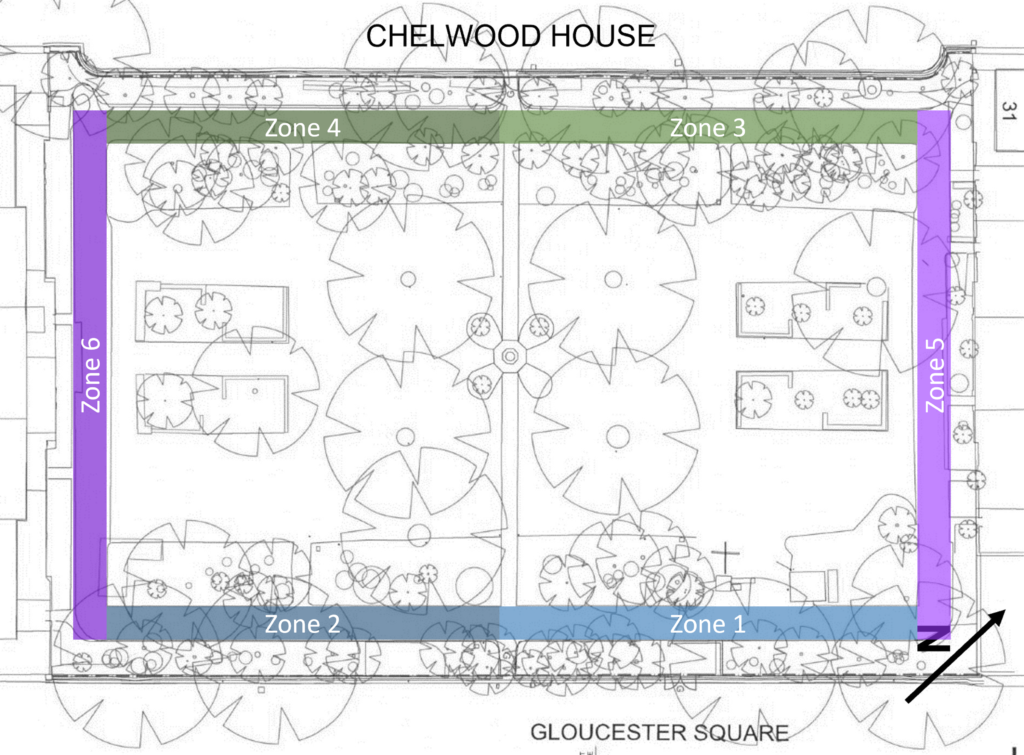
Plan of Approach: One Zone at a Time
A 4 yard skip can fit in the Garden’s compound allowing for 4-5 tonnes of material to be removed at a time, for £200-280 per skip.
The Garden Secretary is currently volunteering circa 5 hours a week to remove the material to the skip. He is also being assisted by the Garden Caretakers for a few hours each week.
The intention is to clear zones, one by one with a complete removal of the gravel soil mix in Zones 1-4. In Zones 5 and 6, we will attempt to salvage some gravel for use elsewhere in the Garden.
Immediate Next Steps
Once at least 1 zone is fully uncovered, the Committee will start inviting surfacing contractors to attend site and propose the best long-term solution for the Garden’s path.
Having spoken to these surfacing specialists we will undertake immediate remedial works to the underlying path, including repairing the defects and trench-cuts, levelling drain covers, and flushing out drain pipes.
Where we discover cuts / divets / ridges in the path additional warning signage might be required, please bare with us whilst these issues are resolved as efficiently as possible.
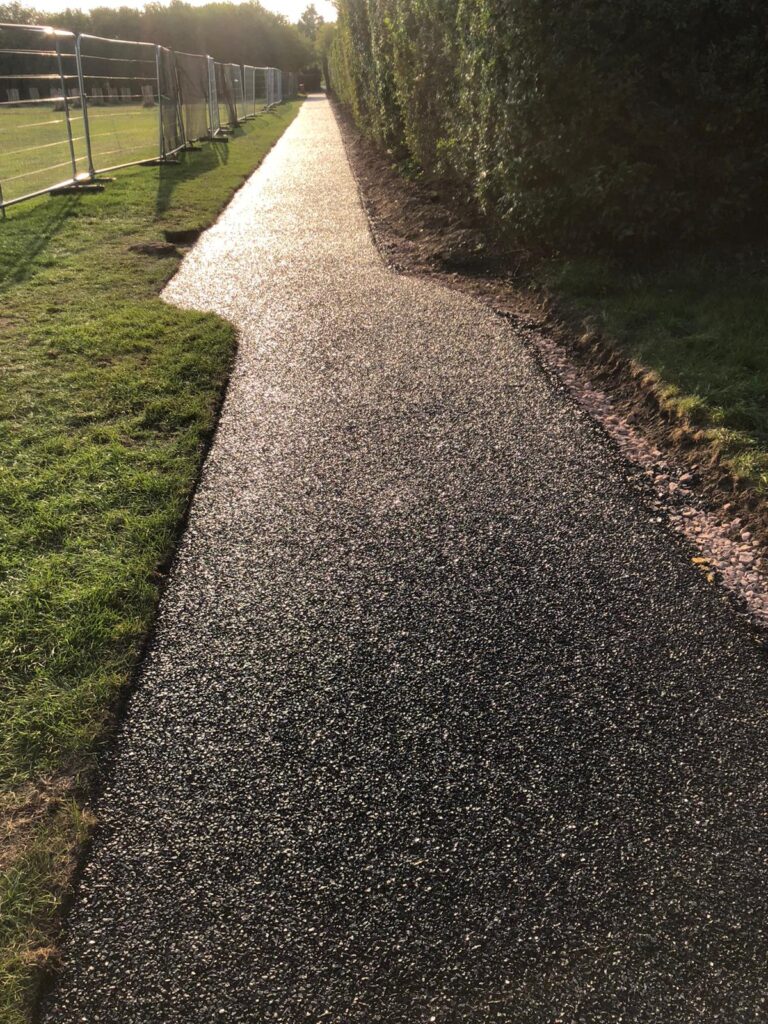
Potential Future Covering
Once at least 1 zone is fully uncovered, the Committee will start inviting surfacing contractors to attend site and propose the best long-term solution for the Garden’s path. Fortunately the Garden Committee are currently inviting surfacing experts to tender for the playground works, giving an opportunity to discuss the path and future options.
Whilst it will be a future committee’s decision when and how to improve the path, the current committtee are minded to prioritise a:
- Permanent solution (not to lumber future committees with works like we are currently undertaking)
- Asthetically pleasing surface – a new surface is likely to be required due to cuts and defect in the current surface
- Surface requiriring minimal maintenance – the existing surface consumes several hours of the gardeners time each week to clean-up soil or pickup small items from the leaf-blowing. Any future surface should help, not hinder the gardeners.

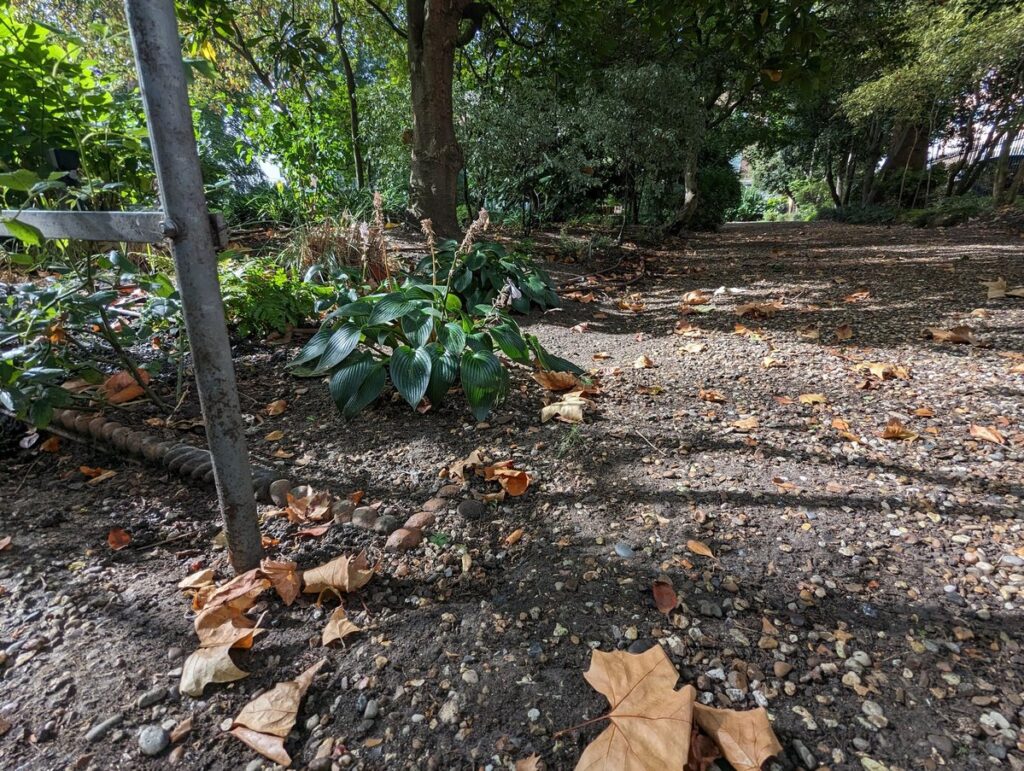

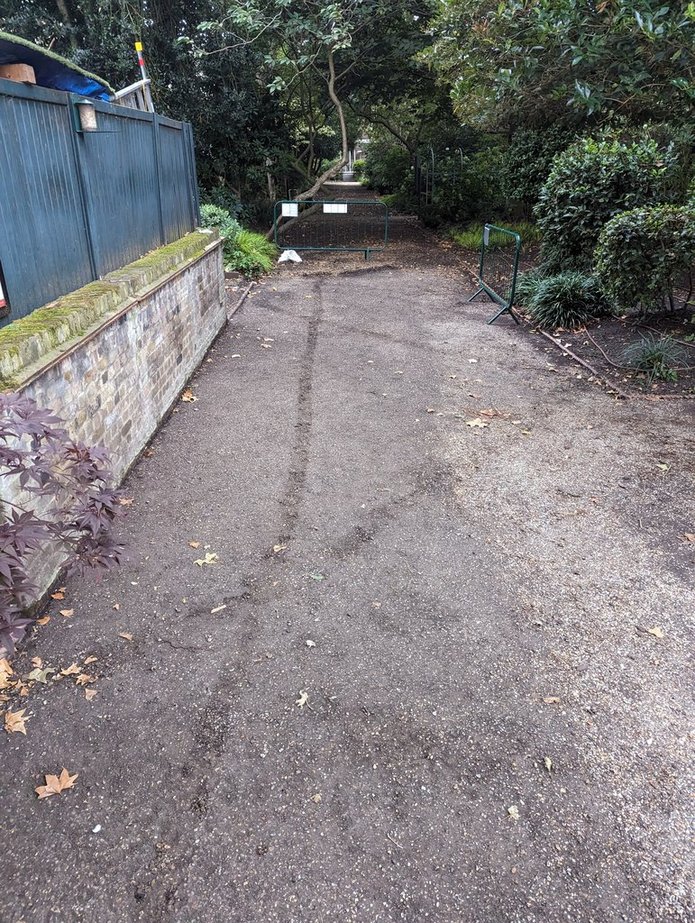
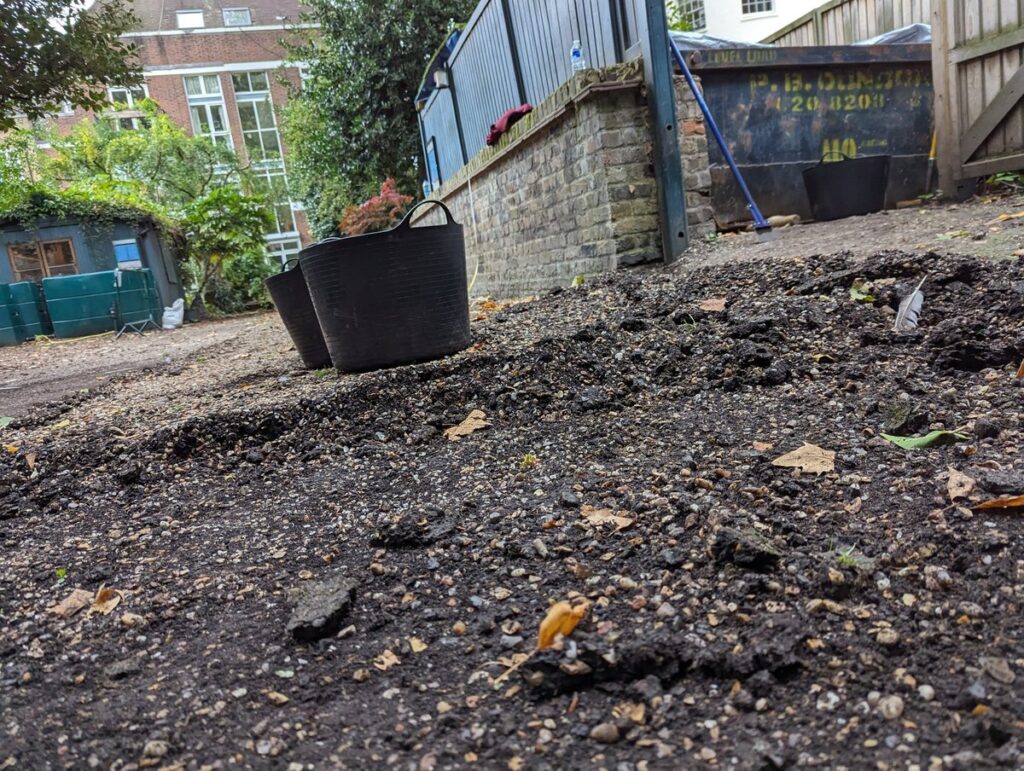

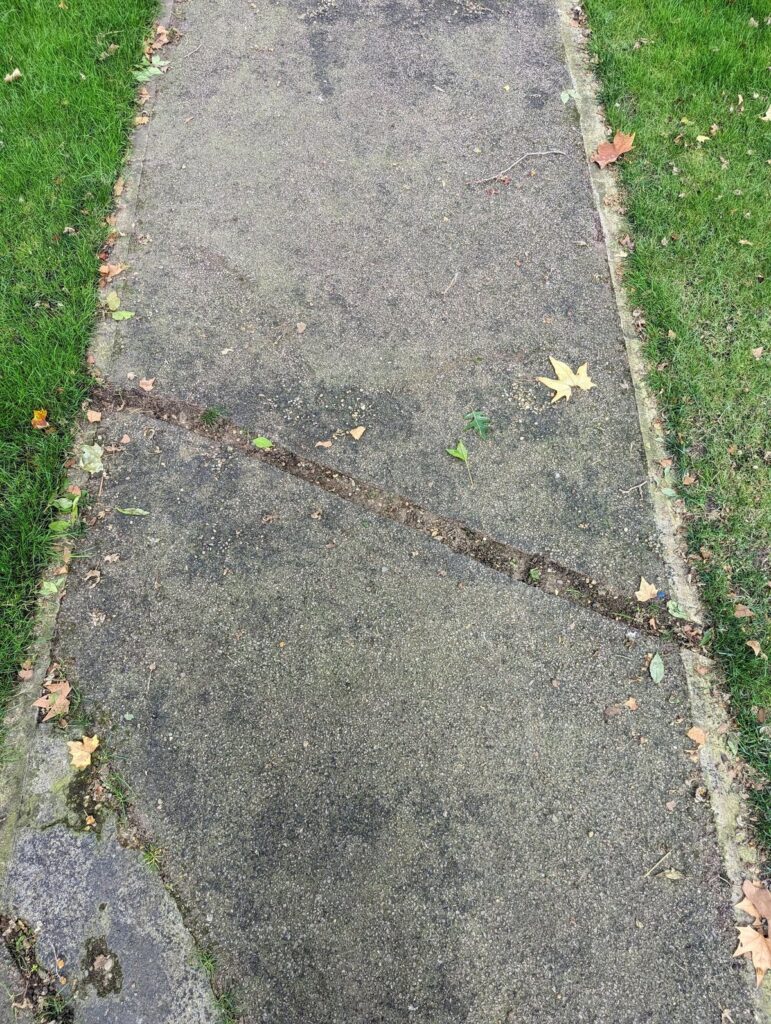

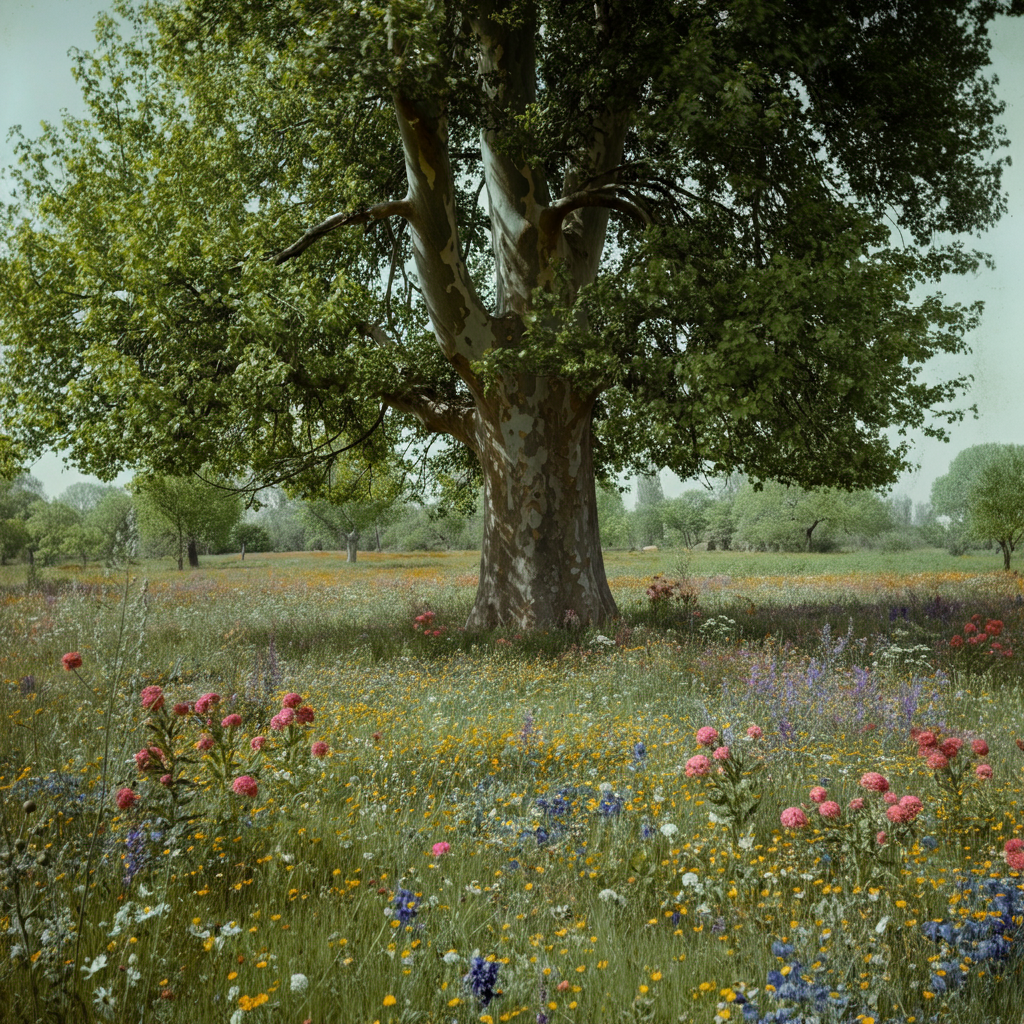

[…] 2024 we successfully stripped back mix of gravel and muck, revealing the original path on the Southern si…, which has made for a much neater and less-muddy surface over […]